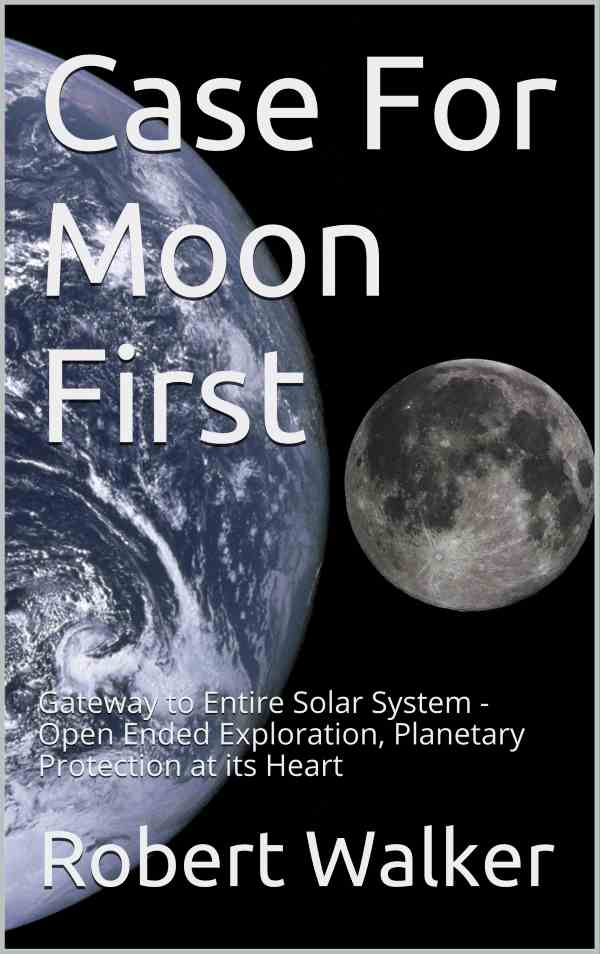
Positive Future For Humans In Space - Open Ended With Planetary Protection at its Heart

(See high resolution version of this cover picture)
Copyright © Robert Walker (UK). All rights reserved.
Cover picture shows Moon Earth comparison (from wikipedia, public domain).
First Publishing on Kindle: April 2016
You can also get this on kindle, and read this on my Science20 blog- published 2016. (Science blog version is identical except for formatting, cover picture, and table of contents).
For my other kindle booklets, see my author page on Amazon.com.
(Most of the links in this section take you to appropriate sections of this booklet)
The Moon is our nearest unexplored territory outside Earth. To ignore it is like ignoring Antarctica after the first few landings in the nineteenth century. Why rush humans as quickly as possible to distant Mars, the one place in the inner solar system most vulnerable to Earth microbes?
"If such capabilities were to become available, one advantage is that the experiment would not be limited by the small amount of material that a Mars sample return mission would provide. What is more, with the use of rovers, an in situ experiment could be conducted over a wide range of locations." (Page 41 of Safe on Mars)These are now the most effective way to search for Mars life, past and present (as eight exobiologists said in a white paper submitted to the decadal review). With our new much more complex understanding of Mars, a sample return will not prove that Mars is safe for humans, or that humans are safe for Mars. Find out more
The Moon in this vision is a gateway to the solar system, a place to develop new techniques and explore a celestial body that is proving much more interesting than expected. Along the way, we are bound to get human outposts in space, and colonization may happen also.
However, settlement in space doesn't need to be the driving force behind our space exploration, any more than it is the driving force behind the study and exploration of Antarctica. If we try to turn Mars and other places in space into the closest possible imitations of Earth as quickly as possible, this may close off other futures, like the discovery of some vulnerable form of early life on Mars, or better future ways to transform Mars.
Once we develop the ability to live in space for years at a time, then the whole of the solar system will open out to us, and while keeping future options open on Mars we can explore Venus, Mercury, asteroids, Jupiter's Callisto and further afield, and Mars itself via telepresence. We also have many experiments in human settlement to try closer to hand on the Moon. This can be an exciting future, with humans working together with robots for remote exploration, as our mobile sense organs and hands in the solar system and galaxy.
Are you keen on humans in space, but skeptical about Mars as our first objective for human space exploration or for colonization? Do you think we will start with settlements supported from Earth, such as we already have in inhospitable places such as Antarctica? Do you think our exploration should be open ended with science as a core objective, and planetary protection and reversible biological exploration as core principles?
Do you see the Moon as an exciting first place to visit and explore, and see robots as our mobile sense organs in the solar system? Do you think that it's not yet the time to relax planetary protection guidelines, and that there is nothing special about microbes on human spacecraft that would make Mars less vulnerable to them?
Then this may be a vision for you.
The Moon is interesting in its own right. To ignore the Moon is like ignoring Antarctica because someone landed there in the nineteenth century, saying that Antarctica is already "done". It's the closest place to us in space which we can explore on the ground, and also the easiest, and safest to explore. If we can't explore our Moon, we have no chance of exploring Mars.
Also - why rush humans as quickly as possible to the place in the inner solar system most vulnerable to Earth microbes? We want to find native Mars life there, if it exists. It is easy to find life if you bring it with you yourself. That would be the worst possible anticlimax of our search for life in the solar system. Imagine, for instance, if we found that right up to the first human visits, present day Mars was the home to RNA based life which on Earth got made extinct by DNA life. Imagine if we discovered this just too late to study it, because our accidentally introduced microbes had made it extinct on Mars as well, or we discovered it too late to stop the spread of Earth life and its inevitable extinction? We must make sure this sort of thing can't happen.
The Moon meanwhile is also resource rich. Many of the resources advantages listed for Mars apply to the Moon also. It has some resources that Mars doesn't have indeed.
This is the ESA video about ideas for small robotic missions first, followed by Antarctic base type settlements on the peaks of eternal light at the lunar poles
If you are keen on Mars colonization, it is not hard to find a future vision to inspire you. Elon Musk has plans to send a hundred people at a time in his proposed "Mars Colonial Transporter" and found a city of 80,000, and eventually a million. He is due to reveal these plans at the IAC conference this September. And NASA, though they don't have such a large scale vision, aim to land human boots on Mars, with an eye to permanent Mars settlement in the future. You can also join the Mars society and read the books of Robert Zubrin.
But what if you are keen on humans in space, but don't think we have any realistic chance of colonizing the planet? What if you love science, and think "boots on Mars" has significant planetary protection issues? What can your future vision be? You have to go back perhaps to O'Neil's "Colonies in Space" vision of the 1970s to find an alternative that has the same level of positive inspiration as this Mars colonization idea.
Now though, some of us are discovering a gradually evolving alternative that I think will be a positive future inspiration, based on the Moon as our next place to visit and start permanent settlement rather than Mars. This new vision is open ended, with new goals that we discover along the way, and has planetary protection as a core principle.
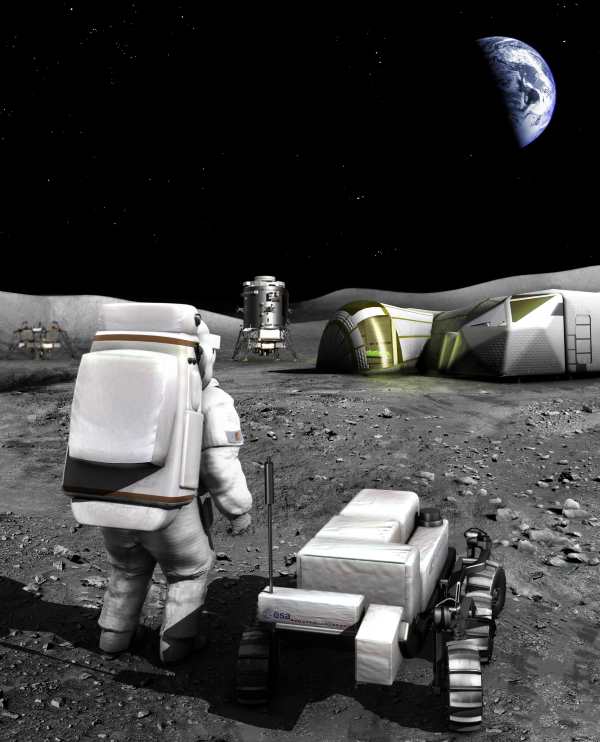
ESA image from blog post: Lunar Surprises - ESA rocket science blog
If you don't think we have a realistic chance of colonizing Mars, you can present your reasons for skepticism. You can say that it is sure to be much harder to live on Mars than to set up home in Antarctica, the Atacama desert, or the top of Mount Everest. You can point out that Mars is far more like the Moon than it is like Earth in terms of habitability, with its laboratory vacuum for an atmosphere (similar to Earth's atmosphere at 30 kilometers upwards), hard radiation, and extremes of cold.
You can mention that (though it can get warm in the daytime), it gets so cold at night that carbon dioxide freezes out in dry ice / water ice frosts at night for 200 days of the year even at the equator. You can point to the additional issues of the dust storms, and harmful perchlorates in the dust.
I think everyone agrees with all those points. The difference is that prospective colonists see them all as challenges to be overcome, rather than as reasons not to colonize the place. They will point you in the direction of Robert Zubrin's books explaining how it would be done.
You can go on to ask, would that really work as a place where a million people, or even a thousand people could live and be self sufficient without constant expensive resupply from Earth? When we don't colonize even deserts on Earth, would we really colonize the near vacuum extreme conditions of Mars? However, a keen Mars colonization enthusiast will answer "Yes!" emphatically. Somehow all these problems will be solved, they say, and we will have colonies on Mars.
You can also ask, why land our trillions of Earth microbes in every spaceship landing there, while searching for Mars life? With our robotic missions, we continue to sterilize as carefully as before, with no sign of any suggestion that we can relax the planetary protection requirements. Indeed the trend is towards more rather than less by way of planetary protection for robots.
So, what is special about the microbes that hitch a lift in human occupied spacecraft? Why give them special treatment? Would it not be more sensible to keep them well away from the planet too, until we know what effect they will have?
But that is all negative vision. It's not going to inspire people. Again the colonization enthusiast will agree that this would be the ideal way to proceed. However they will say that colonizing Mars is so important, that they have to go ahead anyway. Then they will assure you they will take the best precautions they can to protect the planet given the requirement that they have to land humans on Mars. They may go on to say that some irreversible contamination of Mars with Earth life is inevitable, so we have to find a way to cope with it.
Humans need vision and inspiration, I agree. If you just say "can't do this, don't do that" that's a negative vision that can't inspire anyone. We need a positive vision if we are going to have any alternatives to this Mars colonization idea for the future.
So, I think I'm trying to develop an alternative positive vision here. Whether it works or not is something I'm finding out. It's getting enough favourable attention to be encouraging. In the process I've also come across others with alternative visions of their own. So perhaps it might encourage them too to continue to develop their visions.
The more visions we have, the more options we have for the future.
It is hard to present a vision like this in a short period of time. Remember that the positive vision of Mars colonization is also one with many details to support it, built up by its advocates over many books, talks, television programs and so on. So an alternative positive vision also has to be quite detailed. This article, though it is quite long, is a rapid summary of just the main ideas.
Also, I'd also just like to say at the outset to humans on Mars enthusiasts, that "This approach doesn’t mean that humans can never land on Mars ever". It's the microbes that are the planetary protection issue here, not humans. And the microbes are an issue right now because we don't know what is on Mars, or what effects our microbes will have on the planet.
I will suggest that whether microbes continue to be an issue in the future, or whether we can relax planetary protection measures for Mars, is something we can only find out by studying the planet in much more detail than we have so far.
The key point here is, that while we continue to explore other places in the solar system with robots, we start with the Moon, for humans, as a place of great interest in its own right, and not just as a step on the way to Mars.
This is an important part of the vision, so I'll open out by talking about how interesting the Moon is, in some detail. It's our first place to explore on foot outside of Earth, and a gateway for humans to Mars, Venus, Mercury, the asteroids, Jupiter's moon Callisto, and further afield. If we develop the ability to live in space for years at a time on the Moon then the whole of the solar system will open out to us and we won’t need to be focused on humans to Mars as the only option.
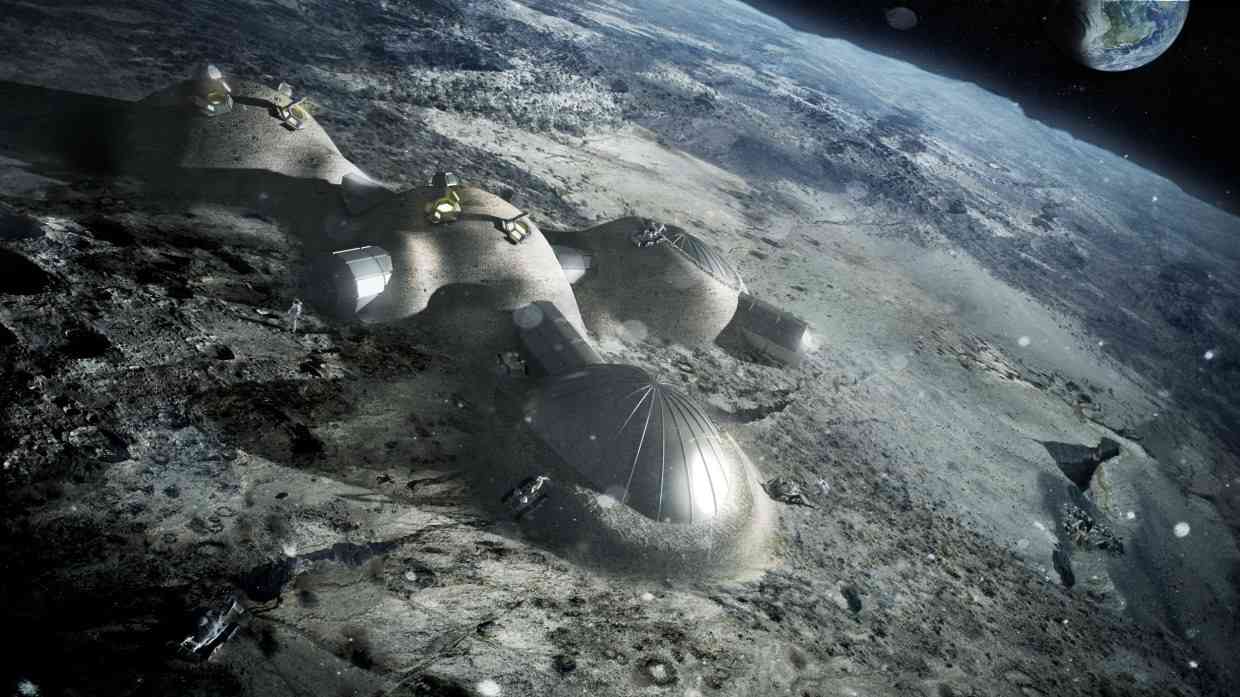
Artist's concept of a permanent lunar base, credit ESA.
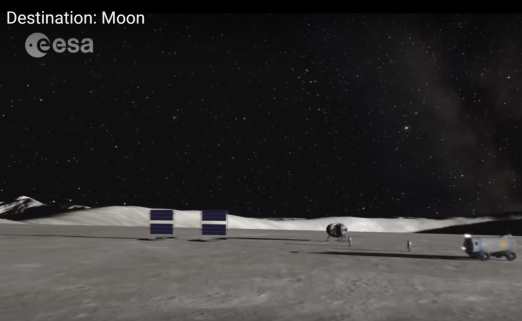
Screenshot from ESA Destination Moon video.
I've added links to my online articles to find out more. I have also made some of them into kindle booklets for those who prefer to read them on kindle - these are identical to the articles, with addition of a table of contents and cover image. I've included the cover images here, and you can click on the image to go through to the booklet.
In this article I use "space settlement" as the more general term, to refer to any humans living in space in permanent or semi-permanent bases, as they do in Antarctica - and space colonization for some later stage when they may become more self sufficient and also have children born in space.
It is likely to be a progression, first outposts only temporarily inhabited. Then bases, like an Antarctic base. At some point perhaps quite early, they become materially self sufficient in many things, able to produce all their own food, recycle their water, and produce power and eve fuel for their rockets in situ, but dependent on Earth for other things like spacesuits, computer chips etc. At some point we get the first children born in space, and then we may get the beginnings of true colonization. But, I argue, colonization is perhaps not the best goal to have in the early stages. We may miss many opportunities if we make this our main aim, rather in the same way that if the early Antarctic explorers had had as their main aim to colonize Antarctica, they would surely never have succeeded, and would have missed out on the many discoveries and advances in science that came from a more open ended approach.
So the main points are (with links to my articles here to find out more)
Mars colonization advocates often contrast Mars with the Moon. The Moon may be described as as uninteresting for human colonization as a lump of concrete. But actually it turns out that the Moon is very rich in resources. We need a "Case for the Moon" here like Robert Zubrin's "Case for Mars".
Moon advocates perhaps don't hit the news as much as the Mars advocates but are just as enthusiastic about their vision. Paul Spudis is one, with his most recent book, The Value of the Moon: How to Explore, Live, and Prosper in Space Using the Moon's Resources. Another is Dennis Wingo, CEO of Skycorp, see his recent paper, and appearance on the Space Show. And the ESA and Russia are strongly behind the idea of sending humans to the Moon first.
So, let's look at some of the suggested lunar resources first.
The Moon has CO2 too, like Mars. At the poles - it has an estimated at least 600 million metric tons of ice (based on the mini SAR and lunar prospector data), indirectly detected through radar, probably much more. If those figures are correct, and if the proportion is the same as for the LCROSS measurements, 2.12% of that is CO2, so that's more than twelve million metric tons of CO2 on the Moon by that estimate - in the form of dry ice.
Also CO2 is not actually needed as a constant input into greenhouses as you might think. In a closed system, then humans who eat the food breathe out just the exact amount of CO2 that the plants need to grow the food they just ate (minus a small amount for feces but actually, this may surprise you, most of the carbon we eat is breathed out as CO2). If there are plant wastes, as there usually is, half of the plant mass - that doesn't really change anything. The CO2 you get from burning the plant wastes or composting it, when combined with the CO2 breathed out by humans, is almost exactly the amount the plants need to grow.
If you don't have a closed system greenhouse like that, if you have to import food, then you have a problem of an excess of CO2 which has to be dealt with somehow. On the ISS it is often vented into space.
For more about this see Could Astronauts Get All Their Oxygen From Algae Or Plants? And Their Food Also?
It has lunar caves to explore, which could be large enough to fit an entire city within, in the low lunar gravity.
Lava tube caves on the Moon could be stable up to five kilometers wide in the lower lunar gravity. The black silhouette here shows the city of Philadelphia superimposed in one of these suggested tubes. We know there are rills on Mars this wide and can see cave entrances into them on the surface in, photographs taken from orbit, but we can't see far into them so don't know how large the caves are yet. They may have been spotted through gravitational anomalies in the Grail spacecraft measurements: Scientists May Have Spotted Buried Lava Tubes on the Moon - see also Grail data points to possible lava tubes on the moon.
This is only possible because of the low lunar gravity. We don't know for sure if such large caves exist, but it does have many cave entrances photographed from orbit, which proves that it has caves similar in size to Earth caves at least. And the extensive systems of rills and the Grail data are suggestive of larger caves there to be discovered.
We have pretty good evidence now of ice at the poles, in permanently shadowed craters, thought to be relatively pure and at least a couple of meters thick according to radar data from a NASA instrument flying on India's Chandrayaan-1 lunar orbiter.
It's not a direct detection, there is still room for scepticism about it, as rough material would have the same radar signature as radar transparent ice. But craters that are rough when new, are rough both inside and outside the crater rim. While these signatures are found only inside the craters and not outside the rims, which they interpret as meaning they are caused by ice. The temperatures are also right for ice.
If it is ice, it could be "fluffy ice" which would reduce the amount of ice detected.
"We do not know the physical characteristics of this ice—solid, dense ice, or “fairy castle”—snow-like ice would have similar radar properties. In possible support of the latter, the low radar albedo and lower than typical CPR values for nonanomalous terrain near the polar craters are 0.2–0.3, somewhat lower than normal for the nonpolar highlands terrain of the Moon and are suggesting the presence of a low density, “fluffy” surface."
(page 13 of Evidence for water ice on the moon: Results for anomalous polar)
And not just a little ice; if this is what they detected, there's estimated to be at least 600 million metric tons of this, and possibly much more.
It also contains other volatiles. We know for sure that there is some ice on the Moon, by the LCROSS impact experiment. Relative to H20 at 100% they found H2S at 16.75%, NH3 at 6.03% SO2 at 3.19%, C2H4 at 3.12%, CO2 at 2.17%.
So, if the rest of the ice at the poles has a similar constitution to the impact site that's a lot of nitrogen (in the ammonia) and CO2 on the Moon at the poles.
The green circles here surround craters at the lunar north pole thought to have layers of ice, with an estimated total of at least 600 million metric tons of water.
(0 degrees at bottom)
There is ice offset from the north and south pole. According to one hypothesis, this may be ancient deposits from over three billion years ago before volcanic activity, which changed the polar axis slightly by shifting material.
On the other hand, caution is needed as this is not direct detection. The LEND results (searching for hydrogen through reduced emissions of neutrons of a particular type) are particularly puzzling, as there is almost no resemblance between their map and the miniSAR map.

LEND map - in this picture blue is reduced neutron emission and shows likely locations of hydrogen. 0 degrees is at top.
They did detect hydrogen, but puzzlingly, it was not correlated with the permanently shadowed regions - there was some hydrogen in permanently shadowed regions, and some also in illuminated regions. A recent paper suggests that ice mixed in the regolith in illuminated regions may be ancient ice that survived a minor shift of the lunar axis.
A new LEND mission has been proposed involving low passes over the poles at altitudes as low as a few kilometers, for higher resolution results.
It may also have ice at lower latitudes too, as there are permanently shaded regions up to 58 degrees from the poles. Though they are too warm for ice on the surface, there may be ice there underground. See Ice may lurk in shadows beyond Moon's poles (Nature, 2012).
At any rate, it does seem to have resources of ice at the poles (though memorably, Patrick Moore in one of the last Sky at Night programs that he did said that he'd believe there is ice at the poles when someone brought him a glass of water from the Moon). More research is needed to find out how much there is and where it is.
As for metals, the Moon has many valuable ores.
It has Anorthite which is 20% Aluminium, compared with 25% Aluminium for Bauxite on Earth.
Mining this would create calcium as a byproduct, which is useful as a conductor in vacuum conditions, a better conductor than copper weight for weight - you need half the mass for the same amount of electricity. (Copper does better than calcium on a per volume basis because it is 5.8 times denser, it is also of course much more practical in an atmosphere because calcium reacts vigorously with air, but that's not a problem for conductors that operate in a lunar vacuum).
"Calcium metal is not used as a conductor on Earth simply because calcium burns spontaneously when it comes in contact with oxygen (much like the pure magnesium metal in camera flashbulbs). But in vacuum environments in space, calcium becomes attractive.
"Calcium is a better electrical conductor than both aluminum and copper. Calcium's conductivity also holds up better against heating. A couple of figures mining engineer David Kuck pulled out of the scientific literature: "At [20C, 68F], calcium will conduct 16.7% more electricity than aluminum, and at [100C, 212F] it will conduct 21.6% more electricity through one centimeter length and one gram mass of the respective metal." Compared to copper, calcium will conduct two and a half times as much electricity at 20C, 68F, and 297% as much at 100C, 212F.
"Like copper, calcium metal is easy to work with. It is easily shaped and molded, machined, extruded into wire, pressed, and hammered.
"As would be expected of a highland element, calcium is lightweight, roughly half the density of aluminum. However, calcium is not a good construction material because it is not strong. Calcium also sublimes (evaporates) slowly in vacuum, so it may be necessary to coat calcium parts to prevent the calcium from slowly coating other important surfaces like mirrors. In fact, calcium is sometimes used to deoxidize some metal surfaces. Calcium doesn't melt until 845C (1553F).
"Utilization of lunar materials will see the introduction of industrial applications of calcium metal in space."
From the section on Mining the Moon in Permanent - by Mark Evan Prado, a physicist in the Washington, D.C., region working for the Pentagon in advanced planning in the space program.
The Moon is deficient in copper, at least on the basis of what is known so far, but as well as calcium, aluminium is a good conductor.
The LCROSS experiment found silver (a superb conductor) and mercury at the impact site, but the concentration is not known, except that it is far higher than the levels in the Apollo samples, and is probably in a layer below the surface, as the signal was delayed. See LCROSS mission may have struck silver on the moon.
It has abundant iron - in addition to ores it actually has free iron metal, from meteorite impacts (and some from the solar wind). Half of one percent of the soil consists of free iron that could be separated just using magnets. It's in powder form already, and naturally alloyed with nickel and cobalt.
As well as being valuable for steel, this is also a conductor, though not nearly as good as Aluminium or Calcium - it would be another useful conductor for some applications - e.g. for electric railroads on Mars, and one easy to access in the early stages.
Also nickel and iron are useful for making nickel / iron batteries. These could be useful for making batteries on the Moon with in situ resources.
"Iron-nickel batteries are very rugged. Their lifetimes which can exceed 20 years are not affected by heat, cold or deep cycling. They are not easily damaged by rapid discharging or over-charging. On the downside, they have poor performance at low temperatures but they can be kept warm with insulation (e.g. simple regolith) and thermal wadis. Also, they only have a charge to discharge efficiency of 65% and will self discharge at the rate of 20% to 40% per month. Despite these shortcomings, they might be the Moon-made power storage systems of choice due to their simplicity and the availability of their component materials on the Moon. Moreover, these materials are among the easiest of materials to produce on the Moon."
See Electrical Energy Storage Using Only Lunar Materials.
The Apollo 17 samples are 20% high purity Ilmenite, a Titanium ore. Titanium is an industrially desirable metal, stronger per unit weight than Aluminium (though it is a poor conductor).
Then the Lunar Reconnaissance Orbiter, with its spectral mapping of the Moon, discovered that it has deposits that are up to 10% titanium, more than ten times higher than on Earth. (Phys.org report, NASA image).
See major lunar minerals.
And that's mainly based on the Apollo results which explored a small region of the lunar surface which has been found to be in some ways unrepresentative - it may have many other surprises in store.
Many ores on Earth would not be detected from orbit, and it seems the Moon has a fairly complex geology as well.
Probably none of them are worth returning to Earth since it's going to be easier to mine the Near Earth Asteroids, especially the ones that consist almost entirely of pure metal. But they are well worth using on the lunar surface once you have industry there. It has some advantages over Mars indeed, such as the pure iron powder easily separated with a magnet.
This is a beneficial side effect of all the micrometeorite impacts on the Moon (which you don't get so much on Mars with its thin atmosphere, just enough to filter out micrometeorites). The Moon's "soil" or regolith contains large quantities of glass, created during the impacts. It also has free iron, as half of one percent of the soil, in tiny micro beads of iron (nanophase iron) which concentrate the microwave energy. Again, you don't have this on Mars.
As a result, it is really easy to melt the regolith using microwaves. It took only 30 seconds to melt a lunar sample at 250 watts (typical of a domestic microwave). You can melt the soil to glass as easily as you can boil water using the microwave in your kitchen. See lunar lawnmower. This only works with genuine lunar soil and not the simulants. We have nothing analogous to lunar soil on Earth, as Larry Taylor, principle author of this paper found: Microwave Sintering of Lunar Soil: Properties, Theory, and Practice. He says the microstructure of the genuine lunar regolith, with nanophase iron beads scattered throughout, would be almost impossible to simulate.
His idea (see Products from Microwave Processing of Lunar Soil in that paper) is to run a "lunar lawnmower" over the soil with two rows of magnetrons. The first row would sinter it to a depth of half a meter using microwaves. Then the second row completely melts the top 3-5 cm of the soil, which then crystalizes to glass. As it does this, it will heat up and release most of the solar wind particls notably hydrogen, helium, carbon and nitrogen. So it could also capture these assets as it goes along, including the Helum 3, if this turns out to be of economic value.
See also The Lunar Dust Problem: From Liability to Asset. This could also be useful, for instance, for making solar panels and other applications.
Then, there's Behrokh Khoshnevis idea for making a landing pad on the Moon using tiles made of lunar glass in situ.
The idea is to make the surface into lots of tiles by injecting something into the soil first to outline the edges of the tiles, then using microwaves to melt the soil in between. I think this is equivalent to the gaps between sleepers on railway lines, to allow for thermal expansion without buckling.
This would make a flat surface for supply vessels to land on. It would also help with the problem of lunar dust by removing dust from the landing area. You can read the details here. He used lunar regolith simulant, so presumably by Larry Taylor's results, it would work even better with genuine lunar samples.
Both the Moon and Mars have dust, and it's a fine dust much finer than dust you normally encounter on Earth, dust so fine that it can't be expelled from our lungs by the hairs on the cells that line the airways (cilia).
The lunar dust is sharper edged, on the other hand the Mars dust is oxidizing, and may also burn your skin. The Mars dust also has perchlorates in it, at levels 10,000 times higher than on Earth. These are food for some microbes, but harmful to humans as they impair uptake of iodine which is needed for functioning of our thyroid glands, which regulate our metabolism. They may also have other effects. See This chemical might make Mars more dangerous.
Mars perchlorates are also likely to be decomposed by ionizing radiation into the reactive ClO3 and ClO2 which have more serious and immediate effects "such as respiratory difficulties, headaches, skin burns, loss of consciousness and vomiting" (quote from page 3 of this paper).
Mars also has dust storms, which the Moon doesn't have - it's likely to be harder to keep dust out of a habitat if you have to go out during a dust storm.
In both cases, steps would need to be taken to keep the dust out of habitats and spacesuits, for instance using the SuitPort which has been developed to keep dust out of habitats for either Mars or the Moon.
Mars and the Moon are rather similar here. In both cases the dust is both a hazard and a resource. For Mars, see Perchlorate on Mars: A chemical hazard and a resource for humans.
For more on the Moon, see "Risk of Adverse Health Effects from Lunar Dust Exposure" (Chapter 13, page 317 of Human Health and Performance Risks of Space Exploration Missions from the NASA Human Research Program, 2009).
In the case of the Moon we also have actual experience of humans inhaling the lunar dust, and can also examine and test the dust returned to Earth. Some of the astronauts found it a sensory irritant, but they did tolerate it fine short term. That's just for a few days however.
I should mention this, since the topic is brought up so often in discussions of lunar settlement. However I don't see this as a major plus point for the Moon at present.
The Moon is a source for helium 3, deposited in the regolith by the solar wind, and some say that helium 3 will be of value for fusion power in the future because it is not radioactive and doesn't produce radioactive waste products. If so, small amounts of helium 3 from the Moon could be worth a lot on Earth and be a useful commodity to export. Apollo 17's Harrison Schmidt is a keen advocate of helium 3 mining on the Moon.
However, we don't yet have fusion power plants at all, and one able to use helium 3 is a tougher challenge. Frank Close wrote an article in 2007 describing this idea as "moonshine" saying it wouldn't work anyway. For a critical discussion see also the Space Review article The helium-3 incantation
Also - there are many other ideas being developed for nuclear fusion, such as laser fusion, and the polywell which has the same advantage that no significant radiation is produced when it uses fusion of boron and hydrogen. I think it is far too soon to know whether or not the helium 3 on the Moon will be an asset in the future when we achieve nuclear fusion power. For a summary, see ESA: Helium-3 mining on the lunar surface.
The Moon may not have much uranium, but it is rich in Thorium, in the lunar Mare. This is useful as a fuel for nuclear fission reactors, which have to be designed to burn thorium instead of uranium. It's not likely to be worth returning to Earth as thorium is abundant here. But it could be very useful in space, at some point in the future.
Nuclear power stations built on the Moon wouldn't have the same pollution hazards and hazardous waste issues as stations on the Earth. Perhaps this may be a way to power space colonies, and interplanetary ships fueled from the Moon, so avoiding the need to launch nuclear power plants from Earth to orbit.
Yes the Mars near to 24 hours day is a remarkable coincidence. But - it's not so much of an advantage as you might think.
The lunar night is a major challenge. Also the lunar day. But it does have the advantage of the peaks of eternal light at its poles where the temperatures are much more even, neither too hot nor too cold.
(The average temperature may seem rather chilly at -50° C, but it varies by only 10° C in either direction and that's warm enough that a habitat there can be kept at a comfortable temperature of 20° C with aid of a solar collector. See Peaks of Eternal Light in the online NASA astrobiology magazine)
The best place for long term settlement on the Moon as they explain in the ESA video may be the peaks of almost eternal light at the poles. These get solar power almost 24/7. There are a few hours and occasional days in the year (Earth days there) where they don't get solar power but most of the time there is just sun 24/7. So they do much better than Mars in that respect.
It also has the lunar caves. These would shield from radiation, lead to a more even temperature, may be possible to be made air tight, and are thought to be possibly as much as several kilometers in diameter (only the Moon with its low gravity can have caves as large as that).
Grow lights would be needed for plants on Mars too, during the dust storms, which block out 99% of the sunlight, and to supplement natural sunlight.
They are not such a big issue - again this is something that has changed a lot recently. With LED lights even if you have to produce all the lighting through electric power, that's feasible. You need about 100 watts of supplied power for lighting for one square meter. With only 13 square meters needed for most of food per person - then that amount of power is actually within the range of RTGs if you had a few of those, for times when solar power is not available. Or generate power from fuel, or use batteries which are topped up when you have an excess of solar power. Especially if you start with the lunar poles, power for the LEDs for your greenhouses doesn't seem likely to be a major issue.
Longer term, well you could build solar panels in a band all the way around the Moon - either at the equator or around a line of latitude closer to one of the poles. With long distance power transmission - which would be easy on the Moon using HVDC then you could easily transmit power from the daytime side of the Moon around to power installations on the dark side of the moon. You could start by just putting a band of those panels on all sides of one of the lunar poles of sunlight.
Even with solar panels all around the Moon, or on all sides of one of the peaks of sunlight - you can't do anything about the times when the moon is eclipsed by the Earth. However, that would only be for a few hours per year for the partial eclipse stages, and totality for the longest duration total lunar eclipses lasts a little over 100 minutes.
As for creating night, for plants to grow in darkness, you don't need a lot of shielding. Just a thin sheet of metal will create a shadow on the Moon. That's all you need to shield out the midday sun.
You need a lot of shielding for the solar storms and the cosmic radiation - but that's pretty much the same as for Mars.
As for the value of CO2 for fuel generation on Mars from a hydrogen feed stock - well the water ice at the poles of the Moon are good for fuel, some entrepreneurs think it can be used to supply rocket fuel to LEO, and so also is the solar power, which is more than double on the Moon especially at the poles where it is not only double the intensity but also present nearly 24/7.
As for the extreme cold - well it has the coldest temperatures of all in the polar craters of eternal night. But that's actually an asset, it can be used for passive cooling of infrared telescopes for instance. Especially since it is right next to areas where the temperatures are pretty much the same year round.
Mars does have an atmosphere, but it is a near vacuum. Less than 1% of Earth's atmosphere. This is not enough pressure to be a significant advantage over the Moon for greenhouse construction, as the lowest pressure greenhouses would be pressurized to around 10% of Earth's atmospheric pressure.
Example: if you have a greenhouse on the Moon at 10% of Earth's, the atmosphere exerts an outwards pressure of one ton per square meter. On Mars, on average, the outwards pressure on your greenhouse would be 0.93 tons per square meter. (assuming 0.7% of Earth's atmospheric pressure). It depends where you site it - at the bottom of the Hellas basin it is a little more, but remember also you have to engineer for the lowest rather than the highest pressure there and it varies seasonally. The maximum pressure is 12.4 mbars for Hellas Planitia which means it requires at least 0.876 tons per square meter for the greenhouse though it is likely to be more than that to allow for the lower pressures in winter. At any rate it's a lot of outward pressure, not that different from the Moon.
The 10% figure here is nearly the lowest pressure greenhouse you can have and still have humans able to visit it using only an oxygen mask and not a full body pressurized spacesuit. If you go all the way down to 6.18%, right at the limit of tolerance with just an oxygen mask, then the figures are a pressure of 0.618 tons per square meter for the Moon and 0.548 tons per square meter for Mars average pressures. At lower pressures than that, the moisture lining your lungs, on your skin, in your mouth etc will boil at blood temperature, so you can't survive without a pressurizes spacesuit.
The atmosphere does help with aerobraking, but at price of a much trickier landing. Typically you have to reduce speed from Mach 5 to Mach 1 and then convert to a lander, and land it on the surface all within 90 seconds. Then typically the parachutes only reduce the impact velocity to around 200 mph, so for the final few meters of the landing you need retropropulsion.
The lunar gravity is only a little under a half of the Mars gravity, so you might think there wouldn't be much difference, but there's a huge difference because of the rocket equation. You can see this difference with the Apollo lunar landers. Their small rocket motors were not only able to land two humans and their supplies on the Moon, but take off as well, and all with no use of atmospheric braking.
The vacuum of the Moon is also actually an asset, so much so that we might need to take special precautions to preserve it.
"It seems absurd to expect that the lunar vacuum could be lost by small-scale operations on the moon. However, high-vacuum and ultra-high vacuum is needed for many industrial processes, some of which may be accomplished on the moon. Some processes which require vacuum and thus would be simpler to manufacture or use on the moon include vacuum tubes, semiconductor manufacture, solar cell manufacture, and particle accelerators.
It seems absurd to expect that the lunar vacuum could be lost by small-scale operations on the moon. However, high-vacuum and ultra-high vacuum is needed for many industrial processes, some of which may be accomplished on the moon. Some processes which require vacuum and thus would be simpler to manufacture or use on the moon include vacuum tubes, semiconductor manufacture, solar cell manufacture, and particle accelerators."Degradation of the Lunar Vacuum by a Moon Base - Geoffrey A. Landis
I think the general point here is that if you try to analyse the Moon as if it was Mars, then it seems like it has little by way of resources. But when you analyse it on its own terms, it is rich in resources, with several unique resources also not available on Mars.
There are two main places suggested for our first lunar base, the poles, or lunar caves.
Since the discovery of volatiles at the lunar poles, as well as confirmation of the existence of the peaks of almost eternal light at the poles, then the lunar poles seem very attractive for our first base. The base would get sunlight nearly 24/7, the temperature hardly varies, and it gets solar power nearly 24/7. The base would need to be protected from solar storms and cosmic radiation which could be done using the regolith piled over the habitats.
See for instance Lunar Station: The Next Logical Step in Space Development (from 2015)
This is where both the ESA and ROSCOSMOS currently plan to site their first lunar base.
The other place to build a base is in the lunar caves.
See for instance, Technologies Enabling Exploration of Skylights, Lava Tubes and Caves (from 2011)
These would give protection from cosmic radiation and solar storms. The temperature is lower, but constant and the base would be easy to insulate and keep warm. There may well be volatiles available in the lunar caves, and if this is confirmed this would make them much more attractive.
The basic idea is to send robots first to scout it out before you send humans - for science reasons and for safety reasons. First, a lander flies over the cave entrance before it lands, to image it close up.
It then drops a line into the cave entrance which is used to supply power to the bots underground, and for them to communicate to the surface.
The bots themselves can be lowered down on tethers, or just be dropped in, in the low lunar gravity and hop about, or drive and hop or crawl. or move like a snake, or like a spider crawling over the walls - or they can have little rocket engines and fly about inside.
For more on this, see the various cave bots on page 21 of the paper. The bots discussed include:
Unless we find a cave close to the peaks of eternal light then the base would only get solar power for 14 days of a lunar month. Some power storage would also be needed for the lunar poles, to deal with the short periods of night they get, including lunar eclipses.
This could be fixed with the use of batteries capable of storing power for 14 days, or through nuclear power. Some power could be supplied for the lunar night through radioisotope thermonuclear generators.
One method that's been suggested for storing energy for the lunar night is to use the reversible reaction of CaO with H2O to produce Ca(OH)2 which liberates large amounts of heat. The CaO can be obtained from the lunar soil as a byproduct of aluminium extraction from anorthite. During the day, the CaO and H2O are dissociated again at high temperatures (550 °C) using sunlight for heat. This reaction is tricky to use for power storage on the Earth because of the presence of CO2 which leads to formation of calcium carbonate, steadily removing calcium oxide from the system. But on the Moon there is no CO2 naturally present so it would be easy to keep it excluded from the power generation and storage system, and the system could be cycled over and over.
Other systems that could be used include flywheels, hydrogen / oxygen fuel cells, beamed power, or indeed long range cables connecting solar panels on the day side of the Moon to the night side.
With modern LED light then only 100 watts is needed per square meter to supply light for photosynthesis. So greenhouses in lunar caves could work with reasonable levels of power.
In both cases, we would explore using robots first.
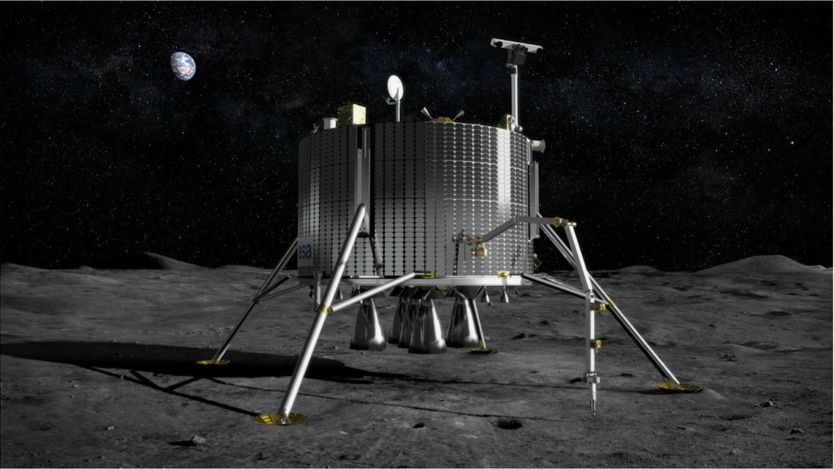
Luna 27 - robotic prospector to the lunar south pole Aitken crater, planned mission for ESA and Russia for 2020.
We would probably use the Bigelow inflatable modules to reduce weight.
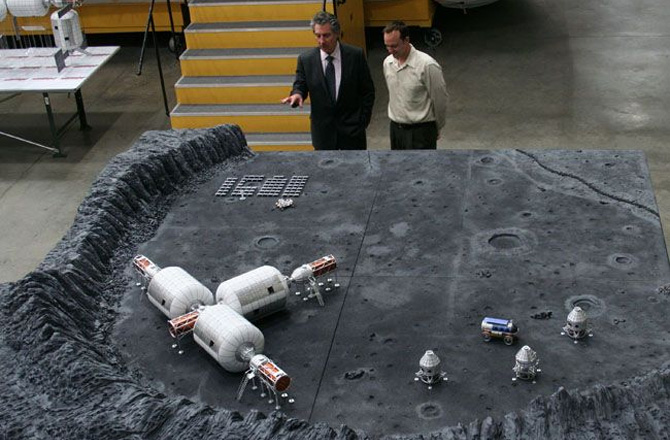
Robert Bigelow with a model of a Bigelow Aerospace lunar outpost
BIGELOW AEROSPACE
We could get started quite soon if the Falcon Heavy is a success, with its 53 tons payload, perhaps using the Dragon V2 for humans.
This is a rather fun idea originally suggested in the Moon Miner's Manifest Classics - 1987-1988 (see page 31) which may be useful at a later stage.
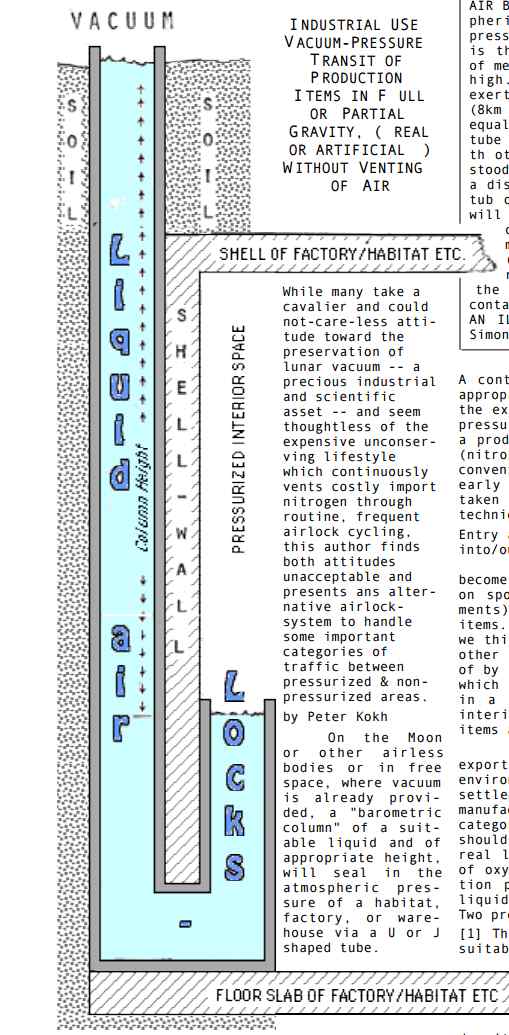
It's a liquid airlock for the Moon. You need to look carefully at the picture. How it works is that you have a sump, like the sumps that cave divers dive into. But on the inside, it is kept in position by the pressure of the air inside the habitat. On the outside is a vacuum.
The interesting thing about it is that you could dive through it in a spacesuit, if it is capable of being submersed, and come out onto the surface with no loss of air at all. And no need to evacuate the airlock, or anything. Just there available as an airlock all the time, at any time to get out of the base you just dive through the sump.
The liquid needs to have very low vapour pressure. The original author suggests NaK. Kim Holder suggests water glass in this stack exchange conversation about it. And I've just suggested you could use ionic fluids - water glass is basically half salts, half water - and an ionic fluid is just a salt, like sodium chloride but that's liquid only at very high temperatures. If it is liquid at room temperature or below, you call it an ionic fluid.
There, a salt in chemistry is a general term for the result of combining any acid with any base. It has positive and negative ions, when in solution, and when you melt it, if you can do that without it decomposing or vaporizing, it also usually consist of positive and negative ions (cations and anions).
Anyway, so turns out if they have high molecular weight, salts are often liquid at room temperature and even at very low temperatures such as you'd get on the lunar surface, so those are all ionic fluids. And they have very low vapour pressure, so wouldn't boil away in a vacuum, so may be useful for liquid mirror telescopes on the Moon.
The only thing is most are high viscosity but there is research into low viscosity ionic fluids. You'd probably also want a high density to reduce the height of the outside part of the sump.
Perhaps it might also be useful for moving cargo in and out. Instead of those big hanger like airlocks you get in science fiction movies, maybe you'd just have a truck that drives through a sump filled with ionic fluid - or even - a funicular railway type carriage gets pulled through it? You could have trains that run out of the base onto the lunar surface directly with no need for an airlock so long as they can withstand being submerged which doesn't seem to be beyond future high tech. The more I think of it, the more possibility it seems to have for future tech.
One thing that makes it harder on the Moon is that with a sixth of the gravity, the column is six times higher. So a water column would have a height of (9.807/1.622)*10.3 or 62.3 meters which is quite a lot. The author talks about higher density fluids to keep the height difference down. Some ionic fluids are high density so that would help.
There's a plus there, however as the height difference is comparable to the depths below the surface of the floors of the lunar cave entrances. So when you dive into the sump at the bottom of the cave, your buoyancy will take you to the surface. A sump that goes all the way from the cave floor to the surface would make it easier to move goods up and down using weights, or floats.
It would also help keep out dust. A lot of the dust in the Apollo lunar module came in from the outside of the suits. So it would surely also come in on the outside of vehicles and their wheels, and there'd be a chance of it getting scattered in through an open airlock too from the outside. None of this would happen with a liquid airlock.
We are at the same stage there as the very first Antarctica explorers, setting foot on a continents sized land mass that we know little about first hand.
The ice at the poles of the Moon could be the "Record keepers of the early solar system" as Greg Delory put it.Then there is more ice offset from the north and south pole. According to one hypothesis, this may be ancient deposits from over three billion years ago before volcanic activity, which changed the polar axis slightly by shifting material.
There are other surfaces on the Moon that are recently formed with few craters - changed by some activity, perhaps emissions of gas, in the very recent geological past Some think it may still have ice, deep down, or even trapped water, from a layer of water rich material that might have accumulated on the early Moon at the same time our oceans formed soon after the original impact of the Mars sized protoplanet with early Earth - Water on the Moon, Yvonne Pendleton, page 3.
We don't yet know the age of the ancient South Pole - Aitken basin, a huge 2500 km diameter crater on the far side of the Moon, the "oldest, deepest and largest basin recognized" on the Moon. Just a few samples of rocks returned from this crater would establish this.
The Moon might also be of interest for evolution and exobiology. That's because meteorites from Earth must hit the Moon in large numbers, after huge impacts on Earth such as the dinosaur extinction Chicxulub event, ( perhaps a million fragments around a cm in size). Though there is no atmosphere, the gravity is so low that meteorites from Earth can hit the surface at quite slow speeds (comparatively). This has lead to many ideas in the literature of ways that organics from life on Earth or other sources of interest to biology may be there for us to discover. We can only find out for sure by exploring the Moon on the surface:
The Apollo samples were recently re-analysed and the composition of amino acids suggests some extraterrestrial sources, Though the analysis was a tricky one due to contaminants from Earth in the form of rocket fuel, organics taken to the Moon by the astronauts and organics introduced while handling them on Earth, which suggests we need to take care as we explore the Moon.
So, another thing we can do on the Moon is to find out how much organic contamination accompanies human explorations. E.g. before we send humans to Phobos or Deimos or wherever they go next, we'd better know what humans will do to a celestial body when they set up a settlement there. Especially if the aim is to study ice deposits in craters and such like. Organic Measurements on the Lunar Surface: Planned and Unplanned Experiments
The far side is the best place to build radio telescopes anywhere near to Earth because it is radio dark, shielded from Earth by the Moon. Long wave telescopes could be built simply by rolling out lines of cable across the surface. It is a particularly good site for frequencies below 100 MHz, as these are blocked by the ionosphere on Earth. This would open up the last unexplored frequency regime. in our radio observations of the universe.
Further into the future, we could build Aceribo dish type radio telescopes in natural craters on the Moon. Frank Drake once calculated that it should be possible to create Arecibo type telescopes with a diameter of 30 km or more on the Moon (see abstract on page 91) - Arecibo is 305 meters in diameter.
We can also construct infrared passively cooled telescopes at the poles, for instance using liquid mirrors
Artist's impression of a large liquid mirror infrared telescope on the Moon, passively cooled near the lunar poles. The dish rotates to make a natural parabolic shape.
Because the Moon librates so much - rocks up and down and back and forth relative to Earth as it orbits us - a telescope like this would see much more of the sky than a comparable telescope on Earth. See Liquid Mirror Telescopes on the Moon (NASA news, 2008). This infrared telescope could detect objects a hundred times fainter than the James Web Space Telescope.
It would have a mirror like this
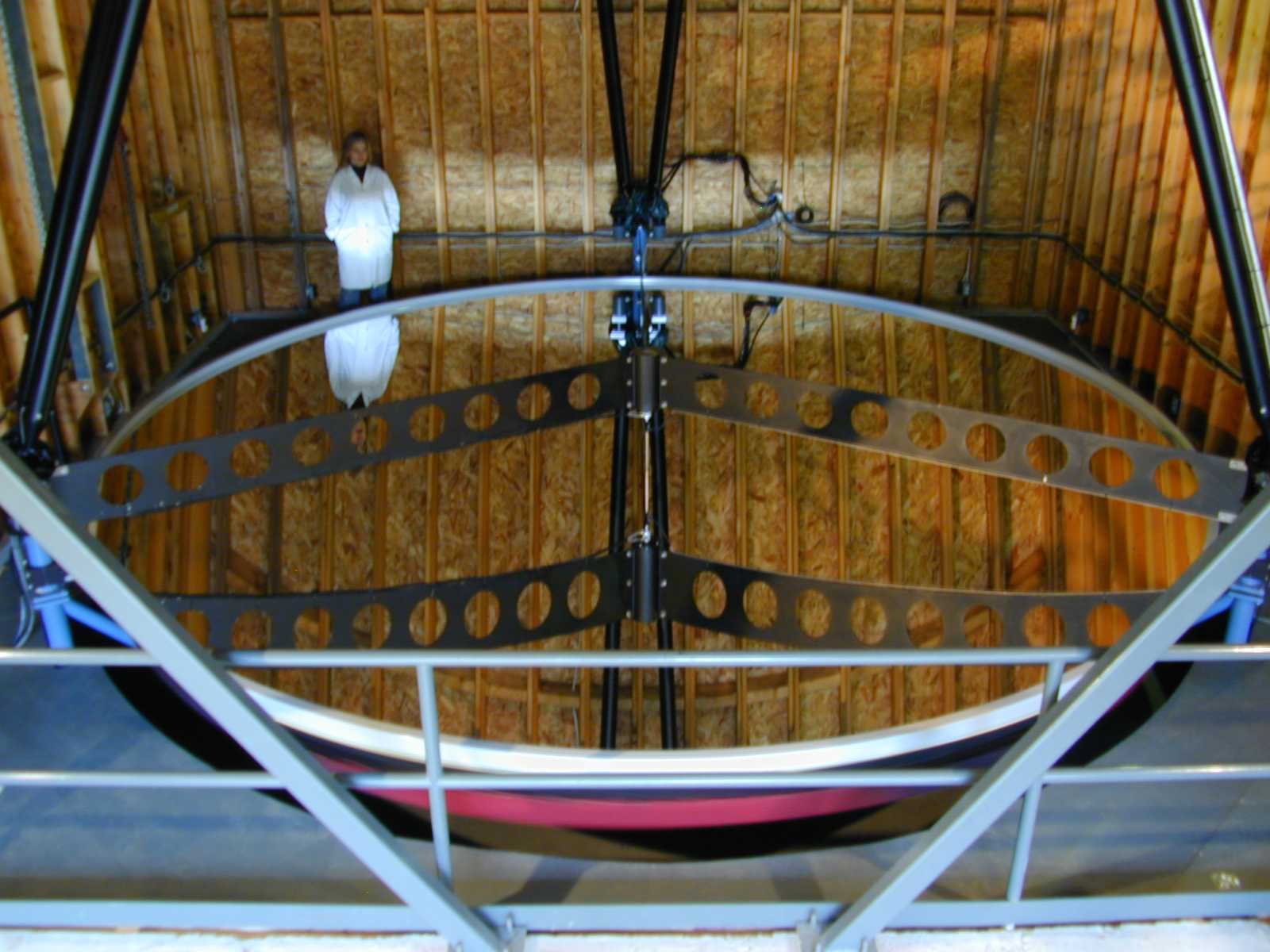
which keeps its natural perfect parabolic mirror shape through rotating the disk slowly. The photo shows the six meter diameter Large Zenith Telescope in Canada. On the Moon, this mirror would be made of ionic fluids (salts in a liquid state) rather than mercury, due to their very low vapour pressure which would let them work in the vacuum conditions of the Moon.
The Moon may be the key not just to habitats on the Moon, but also for habitats in free space. The original plan for the Stanford Torus was to use a rail gun on the Moon to fire material away from the surface to use for the radiation shielding of the Torus - the most heavy part of the structure. With the low lunar gravity - this seems possible, solar powered or nuclear powered rail guns on the Moon. This is something we could test with a lunar base, to find out if it is indeed practical, as it seems to be on paper in the Stanford study from the 1970s. There are other ideas also for exporting materials from the Moon, such as the lunar tether. Though we don't yet have the technology to build a space elevator on Earth, we could in principle build a space tether on the Moon - it would extend through the Earth Lunar L1 points.
Then, there's the possibility of generating fuel using the ice at the lunar poles. With 600 million metric tons at least, if those figures are correct, then it seems that we could make fuel without significantly impacting on the amount of ice there. Agreed, if you want to go to Mars and it's your only destination that you want to send humans to outside of Earth, then you wouldn't start by mining fuel on the Moon. It wouldn't make sense to set up all that infrastructure just to get to Mars. But if you are visiting the Moon because it is interesting in its own right, then the fuel on the Moon could then easily become a key towards opening the rest of the solar system out to easier spaceflight, as well as supplying fuel and water to LEO as well. Perhaps just for a few decades, until we find an easy way to access other sources in the asteroid belt or find easy ways to lift it from Earth.
And on top of that you also have the unexpected - those are just things we can expect on basis of what we know so far. But we usually get surprises when we explore new places in the solar system. And though in some ways the Moon is well understood, in other ways it is barely explored at all on the surface and may still have many surprises in store. It wasn't that long ago that ice on the Moon was a big surprise to many astronomers. It may have other surprises in store too.
In this vision,the Moon is an obvious first place for in situ human exploration, of great interest for itself, and not just a stage on the way to Mars. Indeed, it is a first step towards human exploration of the whole solar system, which may see human expeditions not just to Mars, also Venus, Mercury, the asteroid belt, Jupiter, and further afield eventually.
We have spent hardly any time exploring the Moon so far, with only one expedition with a geologist on it. Imagine if we had given up on Antarctica as "done" after the first expeditions that succeeded in landing a human on the continent?
So far this vision is the same as the vision of the ESA and many others, who say we should go to the Moon first.
The ESA has come out firmly in favour of sending humans to the Moon first.
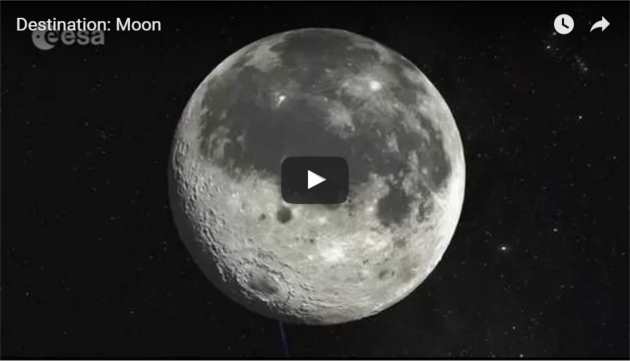
(click to show on youtube)
ROSCOSMOS (Russian space agency) are of the same opinion. They plan a mission Luna 27 to the south pole Aitken basin in 2020 in partnership with Europe.
The Canadian astronaut and former ISS commander Chris Hadfield has come out firmly in favour of Moon first also, as reported by Wired Magazine: "I expect we'll treat the Moon, for the next 100 years, like we've treated Antarctica for the last 100 years. With an initial outpost briefly and then longer stays and people staying through the entire winter, and eventually we will have permanent habitation on the Moon." Then, he says, humans will go as far as Mars.
This is also the message of former ISS commander Leroy Chiao who wrote an article about it for Space.com
Buzz Aldrin also, a keen advocate for Mars colonization, and inventor of the idea of the Adler cyclers for transport to Mars, now says we should go to the Moon first, with quote from his own website:
“Aldrin and other experts believe Nasa is overlooking an important part of space exploration: a permanent, manned base on the moon that would prepare us for the mission to Mars.”
and in more detail here (he used to say to leave the Moon alone), perhaps his views were changed by the more recent discoveries of ice on the poles.
In his Mission to Mars,
"The moon is a different place since I traveled there in 1969.
In his Mission to Mars,
"The moon is a different place since I traveled there in 1969.
"... Thanks to a fleet of robotic probes recently sent to the moon by several countries, there's verification that the moon is a mother lode of useful materials. Furthermore, the moon appears to be chemically active and has a full-fledged water cycle. Simply put, it's a wet moon.
"New data on our old, time-weathered moon points to water there in the form of mostly pure ice crystals in some places. For example, sunlight-starved craters at the poles of the moon — called 'cold traps' — have a unique environment that can harbor water ice deposits. Gaining access to this resource of water is a step toward using it for life support to sustain human explorers. Similarly, the moon is rife with hydrogen gas, ammonia, and methane, all of which can be converted to rocket propellant."
"Fresh findings about the moon from spacecraft have revealed the lunar poles to be lively, exciting places filled with complex volatiles, unique physics, and odd chemistry, all available at supercold temperatures ...
"In short, our celestial neighbour in gravitational lock, the moon, can be tapped to help create a sustainable, economic, industrial, and science-generating expansion into space. The question is, What should America's role be in replanting footprints on the moon?"
And Jeffrey Hoffman is another astronaut who says we should go to the Moon first. The US non profit organization Space Foundation also say the same.
More about some of this in Human Spaceflight At "Coastline Hugging Phase" - Lunar Villages Not Interplanetary Voyages - Op. Ed.
So far this is a "Moon first" argument. There's endless discussion between the Moon firsters and the Mars firsters about where humans should go first. See for instance the The Case for the Moon: Why We Should Go Back Now, and The Case Against the Moon: Why We Shouldn't Go Straight Back published in Space.com in 2011. These discussions rarely mention planetary protection.
Where this new vision differs is that planetary protection is a core principle which guides the vision. It's also an open ended vision where what we do next depends on what we discover along the way. It's a vision for human spaceflight enthusiasts with a deep love of science.
With the Moon as our starting point, we can then explore Mars as well. I totally agree that Mars is a great place to explore and that we can learn much about exobiology from studying Mars. But I think this is best done with robots initially, with humans first controlling them from Earth, and then later on, from Mars orbit.
The Mars colonization advocates say that we need to send humans to the Mars surface to explore it. But I don't think this argument stacks up if you look at it in detail, as you will see. In this alternative vision, humans work together with robots to explore the entire solar system, not just Mars. It uses humans and robots each to their best advantage, where they are most needed.
This early RNA based life could be similar in size to the contested microbe "fossils" in ALH 84001.
The 2.2 a structure of a full-length catalytically active hammerhead ribozyme

So the analogy of colonization on Earth is of limited relevance to space exploration. Which isn't at all to say that it is impossible, but it's a new kind of thing that we have never done before, like colonizing the sea floor, and analogy with the past can't really tell us if it can be done or not.
Overview of Pre-modern human migration - there is debate and controversy about the details, but generally agreed that humans were already present world-wide by the end of the neolithic period (which ends around 2000 BC) or shortly after. Large scale colonization since then has always been of areas where humans can survive with stone age technology, and more hostile places such as Antarctica, the highest mountain summits, and the sea floor have not been colonized.
If you focus just on the ones that succeed you get only a partial picture, which may be over optimistic.
Flag of the Company of Scotland Trading to Africa and the Indies. Their "Darien Scheme" an attempt to colonize Panama, lead the death of nearly all the colonists, and it also drained Scotland of an estimated quarter of all its liquid assets. Scotland was saved from bankruptcy by England, in exchange for unification with England, higher taxes, and agreement to service the English national debt.
".. with current EDL (Entry Descent Landing) capability, a large vehicle plunging through the tenuous Martian atmosphere has about 90 seconds to decelerate from Mach 5 to Mach 1, flip over from being a spacecraft to being a lander, open the chutes to decelerate some more, then fire those thrusters to navigate to the landing site before touching down". - page 137 of SpaceX's Dragon: America's Next Generation Spacecraft, by Eric SeedhouseAll the resources you can find on Mars are also available on the Moon or in asteroids. The Moon has a shortage of nitrogen, but is not as thoroughly explored as Mars in many ways, and may still have it, e.g. it does have some ammonia in the polar ices from the LCross results . Nitrates are rare on the Mars surface also.
It may well be possible to solve this. SpaceX hope to solve this with supersonic retropropulsion. But if you send humans to the Moon or asteroids, you don't have to solve these problems. One less thing to deal with.



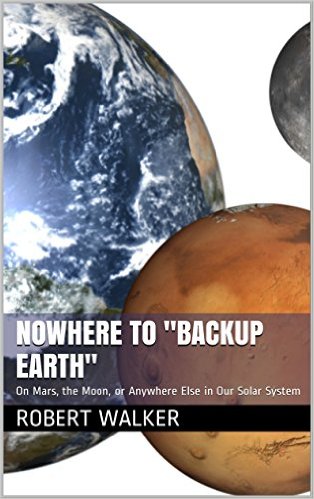

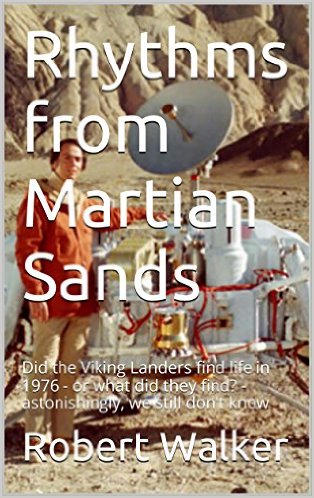
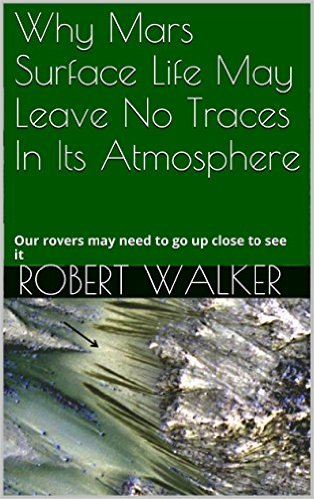
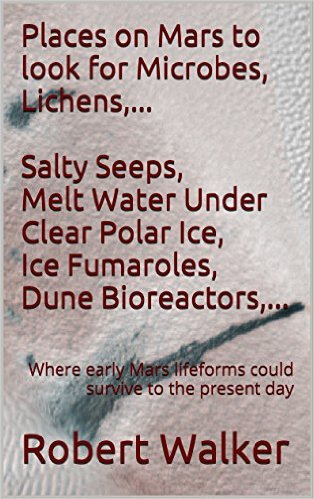
The bathyscaphe Trieste reached a depth of over 10 km in the Challenger deep in the 1960s, with Jacques Piccard and Don Walsh on board. But we don't send even a robotic sub into Lake Vostok to avoid contaminating it with surface life.
Scientists at the National Research Council have prepared guidelines to protect the lakes, similar to planetary protection guidelines. So, nobody would think of sending humans down there quite yet.
The Russians drilled down nearly all the way to lake Vostock, but then stopped until they figured out how to do it safely, preserving the science value.

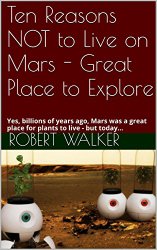




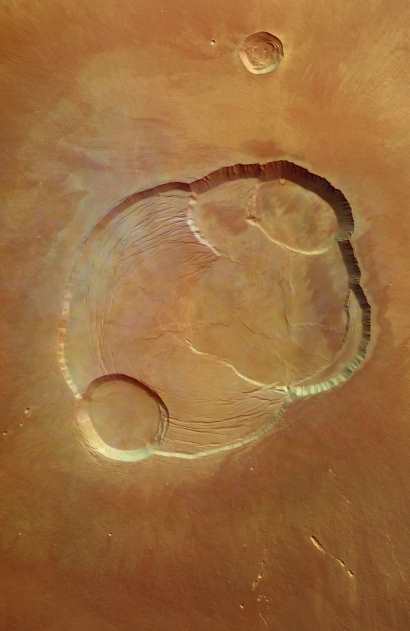
As eight exobiologists wrote in in a white paper submitted to the 2012 decadal survey,Colonization enthusiasts often cite the "Safe on Mars" report as a reason to get a sample from Mars as soon as possible to prove that it is safe for humans. But actually, "Safe on Mars" recommends in situ exploration as the best way to find out about Mars and prove that it is safe for humans. It only recommends a sample return because it concluded that the technology of the day was not good enough for an in situ search.
"In the worst scenario, we would mortgage the exploration program to return an arbitrary sample that proves to be as ambiguous with respect to the search for life as ALH84001."
More than ten years later, we can now miniaturize many of the machines that required entire labs back then to small chips that require minimal power and weigh hardly anything. These include DNA sequencers, electron microscopes, ultra sensitive biosignature detectors able to detect a single amino acid in a sample, and updated versions of the Viking Labeled release using chirality to eliminate false positives. Our instruments also include the exquisitely sensitive electrophoresis "lab on a chip" methods mentioned by Bada et al. Another new idea is the Solid3 approach of using polyclonal antibodies - which can detect, not just the organics you find in animal bodies, but a wide range of organics, again with exquisite sensitivity, and a "lab on a chip".As stated above, there are currently no measurement techniques or capabilities available for such in situ testing. If such capabilities were to become available, one advantage is that the experiment would not be limited by the small amount of material that a Mars sample return mission would provide. What is more, with the use of rovers, an in situ experiment could be conducted over a wide range of locations.
(Page 41 of Safe on Mars)
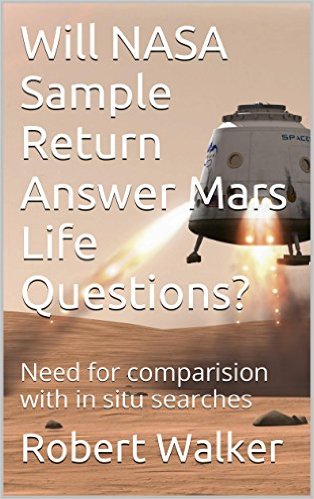

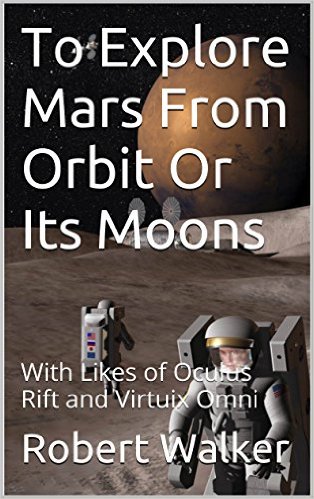
So, the Moon in this vision is a gateway to the solar system, where we can develop techniques we need, and also at the same time explore a celestial body that is proving much more interesting than expected.
By the time I get to the end of that, then it comes over as an interesting and positive alternative. But there are many steps to it before readers can see the vision.
It's a matter of familiarity. We've had decades to get used to the Mars colonization ideas. These ideas may seem unfamiliar, even unlikely and implausible, but give them some time, to think them over, and perhaps you too will find this an exciting and interesting future too?
Perhaps this can help towards a future where humans in space is not all about colonization and making the universe into a place for humans to live in, but one where we can find out and explore and learn from this amazing universe we live in.
Along the way, settlement is sure to happen. Eventually colonization may happen also.
But I'd like to suggest, it doesn't need to be the main driving force behind our space exploration, no more than it is the driving force behind Antarctic study and exploration, or exploration of the sea bed and so forth. And that this future with scientific exploration, and humans working together with robots for remote exploration, our mobile eyes on the solar system and galaxy, is an equally exciting one. And one that is likely to lead to be much more interesting in many ways than a future where we try to turn all the planets and everything else into the closest possible copies of Earth that we can manage, or at least, habitats for humans, as quickly as possible, as our main motivation.
And also I'd suggest it is more practical, and less likely to lead to disappointment. When you look at Mars and your main thought is "how can I turn this into something like Earth?" you may miss many other possible futures that may be far easier to achieve and may perhaps be of great benefit for humanity in ways you can't anticipate.
If you plan everything out and set a goal to achieve before you know what is there, then your plans may not match the reality, and you may miss out on things that you couldn't plan for because there was no way for anyone to know about them in advance.
So, rather than a grand overarching plan, I think human space exploration has to be flexible, continually adjusted based on new discoveries. And that at each stage we plan carefully for the near future, but also do many tests and experiments and explore different avenues, because the most likely thing is that we don't know everything yet that needs to be known, so can't plan for the future in detail in space.
Whatever the commercial or science value of humans in space, it's also a great adventure for humans. We don't need to be ashamed of this, as it is a motive that can lead to us exploring ideas that might be of great value in the future. It's one of the things that help humans to venture into the unknown and to try out new things which may be risky and with no clear immediate value.
As to how much money to spend to finance such things, I don't know, that's for politicians, but even the ISS cost very little when spread over the populations that supported it on Earth. $8 per person per year. Think how much we spend on movies, and computer games by comparison. The ESA spent only one euro per person for the entire ISS project (for more on this see my "Is the ISS the most expensive single item ever built?"). I think the romance of space is a lot of the reason for the ISS, which would be designed differently if it was purely a zero g research lab in orbit (no need to have humans there 24/7), and differently also if it was a human factors research lab.
Acknowledging this as a motive for ourselves, and also for other space organizations, could make it easier to have more realistic plans. Because then it means we don't have to do grand plans where details are spelt out for decades, to explain why the humans are going there. The early Antarctic explorers didn't have a detailed plan to show how their exploration would benefit humanity in the future. It did, in surprising ways, but they had no way of anticipating that.
Let's acknowledge that we don't know for a certainty if human exploration is the best way to find out about the Moon, or whatever the objective is right now, and that we don't know for sure what the future of humans will be in space, but it's a great adventure. Also, as with almost any adventure into the unknown, it may be the best way ahead into a future we can't quite see yet. And if we don't do this, we'll never find out what the role is for humans in space exploration and how they can work with the robots in space.
I say this because it will permit much more open and flexible exploration if we are not required to explain what the humans are doing there and why they are there as part of some plan with every step mapped out for a decade or two into the future. I think the end result of a more flexible adventurous approach like this would be that we find new ways for humans to explore space and may avoid blind alleys that could lead to space exploration stagnating, just because of the lack of some new idea that may make all the difference.
Paul Spudis and Dennis Wingo have presented detailed plans leading up to a human outpost on the Moon and then to a base with a more or less continual presence of humans there. Though they have differences of detail, the basic idea is to send robots first to scout out the Moon, and then to set up a human base at one or other of the lunar poles. Their vision is based around the idea that it will be easy to extract volatiles from ice deposits at the poles, which will be useful for humans in situ, but also help to fuel spacecraft shuttling back and forth between the Moon and Earth, and export water and fuel to LEO and other spacecraft.
I'm presenting a more fluid approach here though. Mainly, it increases the emphasis on the initial scouting phase, and de-emphasizes the later plans. Their plans may well describe exactly what we do. They are worked out in detail and if the assumptions they make are correct, and we make no new surprising discoveries on the Moon, one or other of these plans may well be the best way we can possibly explore the Moon. It's great to have them worked out in such detail already.
However, I think that it's just a little too soon to commit to detailed plans like that about how exactly humans will return to the Moon for a long term outpost or base. I think that we should do open ended research with robots on the surface for a few years first before we plan out the later stages. They have that already, robots that explore the lunar poles. But I'm talking here about a much more extensive exploration, not focused only on the places that seem the best places for humans right now.
This might not be a long period of exploration, and the more robots, the quicker it would be. But we have done so little direct exploring of the Moon on the surface to date, that surely open ended exploration may still turn up many surprises. The volatiles were a relatively recent discovery after all, which changed everyone's ideas about how best to explore the Moon. Perhaps future discoveries may change those ideas again, in detail or dramatically.
This could be done with humans as with Apollo but nowadays robots are a much more cost effective way of doing it. They'd be doing open ended scientific research, and along the way also checking out resources for humans, and getting a fuller picture of the Moon. It would also give us an opportunity to study the Moon before humans arrive with the large rockets and the organics that accompany them, to give a baseline, and to let us study such things as water transport in the thin lunar atmosphere.
Perhaps with a thorough understanding as a result of these studies, we position a human base a few tens, or hundreds of kilometers away from what seems the most obvious place on our knowledge to date. Perhaps the best place for a base is indeed on one of the peaks of almost eternal light as Dennis Wingo and Paul Spudis both suggest. However, there are quite a few of those peaks at both poles, and the best one in terms of light might not be the best for humans in other ways.
Then, we don't know yet, but there might be deposits with 100% pure ice / other volatiles, who knows, if we explore enough, These might be much better for in situ resource utilization than the obvious first choices.
We may also find sites of exceptional scientific interest that need to be protected. Dennis Wingo spoke about developing the North pole for industrial work, so separated by a lunar diameter from the South pole which is for scientific research. That makes sense on present day understanding, but what if there is some uniquely interesting scientific site at the North pole? Perhaps it might even be the other way around?
Or we may get surprising discoveries about the lunar caves which make them go to the top of the list. The caves have an even temperature as for the poles. It's true that the lunar poles are dramatically better sites for solar panels, when you work out the average power generated, as Dennis Wingo shows in his recent paper. But should the amount of solar power available be the main factor for choosing a landing site? It is a factor of course, but solar panels are quite light weight. When you have a stable surface to spread them out on, as for the Moon, and no weather to disturb them, they can even be thin film, spread over a large area. They can also perhaps be made on the Moon itself.
You can compensate for less power by having more panels - and adding facilities to store the power for the 14 day lunar night, which is definitely possible, using hydrogen fuel cells, or good batteries, or salt, or many other ways. Suppose for instance that some of the lava tube based lunar caves are large enough to fit an entire city inside, with smooth, close to airtight walls, easy to turn into large habitats with natural cosmic radiation protection. That by itself might outweigh the solar power advantages of the peaks of eternal light. Or there may be resources in the caves that we don't know about yet, or in some of them, available nowhere else.Or they may have other advantages including ones nobody has thought of yet.
Then, the ice for ISRU on the Moon might not be as restricted to the dark craters as expected. Some think it may exist well below the surface outside of the craters of eternal night. And some think there might be ice over much of the surface of the Moon at some depth, if you drill for it. That last is a somewhat way out idea but not sure you can disprove it on the basis of what we know so far. Also, if there is ice near to a cave, a cave close to the poles say, that would combine the best of both worlds.
Also, a human base doesn't need a constant input of water or oxygen, or CO2, not if we can achieve a reasonably closed system. If they can grow all their own food, the growing plants will automatically produce all the oxygen humans need. And then the humans exhale nearly all the CO2 that the plants need (the equations just add up to make all that happen, and turns out that the carbon content of feces is a minor component). Then nearly all the water can be recovered and used again just as water.
Yes, it might be that the best place for the humans is close to the ice, especially if the ice is the basis for an industrial operation that they have to oversee. But again, maybe that's not the best place for them. Maybe the ice has to be kept free of organics for scientific reasons, and that it's best if the humans are some way away from it. Just as a "for instance". Or perhaps, the main base is somewhere else and there is an outpost, only visited occasionally, near the ice deposits.
Or it might be that they are right and that the peak of "eternal light" with the most solar power is the best place to send humans, and that this also is a place so rich in ice that it will be a source of fuel not just for the Moon but for cislunar space as well.
But if we base our entire strategy on this, before we know for sure, and then it turns out to be wrong, that could be a huge setback. Also, if it is more or less right but less than optimal, we might miss some opportunity that could have reduced the cost of the human mission considerably.
As well as that I think that we need to start working on human factors research. The ISS is not really a human factors research facility. First - why is there so much emphasis on growing food for astronauts in zero g? It's interesting pure research to discover that some plants manage fine in zero g. But as for practical applications, we don't really know whether or not astronauts will typically need to grow food in zero g in the future.
I think this is more a case of "we have a facility in zero g, and astronauts in it, so let's see if we can grow food there for the astronauts?" Even a very slow spin can give you a hundredth of a g for the plants, which is enough to change the gene expression of every cell in the plant, turning many genes on or off. In future interplanetary missions, we may spin the habitats and greenhouses with a counter balance using tethers to achieve whatever g we want for the plants. Or we might just spin them in centrifuges.
For the Moon we are particularly interested in how well plants grow at lunar g. And also of course, how humans manage at lunar g, again very little data, just the few days of astronaut EVAs on the Moon.
Also, there has been no attempt to achieve almost biologically closed systems in space, where nearly all the food and oxygen for humans comes from plants, even though it has been achieved on the Earth with BIOS-3.
For a lunar base, I think we need experiments in growing plants at lunar g. The obvious place to do that is on the Moon of course, but we can speed things up by testing this right away in LEO, testing long term adaptation of plants and humans in lunar gravity. We could have humans in LEO in lunar gravity using tethers for days, weeks, then longer periods, just using existing technology. And even with future advances, it's probably easier to do preliminary experimental work of this sort in LEO rather than on the Moon. Easier and less expensive to get the experiments to LEO than to the Moon. Doing it in LEO will also mean we can try many other gravity levels, and also learn how to achieve artificial gravity for interplanetary missions. This can go on at the same time as the early robotic exploration of the Moon.
This is open research, so we don't know where it is headed. So we should certainly also try small scale centrifuges such as the MIT researchers recommended. That's generally useful, for instance, even just being able to eat or use a toilet in a slowly rotating centrifuge may help a lot with comfort, if that is possible. And it may perhaps give us the opportunity to explore possibilities for augmenting lunar g, in case it is necessary to do that for human health.
We can also do biological closed system research in LEO. See if we can duplicate the BIOS-3 results in space.
So, I'd follow Joe Carroll's idea of an artificial gravity research facility in LEO myself. It's not a zero gravity faculty - though you could add one to the hub later on. It can start off as simple as just one module with a counterweight.
Before that, just the Soyuz TMA or any other spacecraft doing a tether spin on the way to the ISS, deliberately use the longer two day phasing approach to get to the ISS and do your first experiments on the way. I don't know what the cost would be, but not much, just to add a tether to a Soyuz TMA mission that is going to the ISS anyway, and to use the older two day approach path, which they still have as an option.
This video shows a 600 meter tether at 1 rpm joining a Soyuz TMA to its final stage to achieve lunar gravity. Even the most highly susceptible people have no problems with 1 rpm in rotating rooms on the Earth long term. So probably this would be fine for everyone in space also - that is if the Earth experiments are a reasonable guideline which nobody knows of course. There are some indications that in space, with no gravity along the rotation axis, that we can tolerate spins better than on Earth. Though the data is very limited so far.
.
Based on that, we can answer basic questions such as, can humans tolerate spinning for two days, and if so what tether length and spin rate is tolerated? And what are the immediate effects on the human body of artificial gravity? What is the gravity prescription for health (what g level, how many hours a day or full time) and how easy is it to apply it using AG?
Based on those preliminary results from the Soyuz TMA, or any other crewed capsule that goes to orbit with a third stage that can be used as a counterweight, you'd work towards designing a larger AG research lab in the future for longer duration studies. It might b based around using the newer modules from the ISS when it is decommissioned, for a hub for spacecraft to dock to and for zero g research, and then tethered habitats for the crew going round it. If it gets more elaborate, perhaps it would also use spent final stages recovered and fitted out as "wet workshops" like the early ideas for Skylab.
This then would create a small facility in orbit, not necessarily as large as the ISS, just a small space station to start with, which can also be a basis for a staging post in LEO later on. It could also be a facility for research into closed systems, growing plants and so on. It would have a science component of course, like the ISS, but the main objective would be human factors, and it would be forward looking, towards finding out what role humans can play in space in the future. Which of course would have science benefits in turn, once we know more about what humans can do and how best to support them.
It would start small, based on this idea that we are still experimenting, and are not yet very experienced in space travel. At this stage, I think we need to try out ideas, and lots of them, to see what works. This could lead to advances that we would never get if we proceed in a linear planned out way with some grand plan for the future.
So, it is open ended, low cost. It doesn't have to have a continual human presence, unlike the ISS, which is one of the things that makes the ISS so expensive. There's a strong emphasis on closed systems, doing our best to get biological closed systems working in space, which are, after all, a central part of nearly all human space exploration plans, So let's get started on those right away.
If closed systems research pans out, and if astronauts stay healthy in some level of artificial g, then you would supply it only once a year, perhaps, or less, when continually occupied. So then the costs would go right down, and typically at least some of the astronauts would stay up there for several years at a time. If you can achieve this much, then would get a lot of confidence and experience for long duration missions further afield.
Once the lunar mapping and research phase with robots is done, which might be only a few years, then you start thinking about where humans would go on the Moon and what their role would be. You could wind down the LEO facility at this stage, just use it less often, it's still there but no longer needed for AG research as we know the answers to the main questions. Or it could be retained as a staging post for missions to higher orbits and the Moon when needed.
I'd see all this as costing less than the ISS to keep going, once the ISS ends, so it shouldn't impact at all on robotic exploration of the solar system, robotic missions to Mars, but also to many other places. And once humans go to the Moon, if they can build closed system habitats there that only need to be supplied once a year or less frequently, again it would cost probably less than the ISS to keep a lunar facility going. We could run both simultaneously for less cost, perhaps, than the ISS alone.
Building the lunar base would involve ISRU so again it might be easier to build than the ISS too.
Meanwhile you have the private space industry, tourism etc developing which could lead to many facilities in space that are designed for tourists but can also be used by astronauts or are jointly run by tourist companies and space exploration companies / government entities funded as basic research. And maybe already commercial resource utilization too.
If along the way you find that there are resources on the Moon of commercial value, it might lead to a totally robotic facility, but it might be that humans on the spot are useful, so that could happen naturally that humans are sent there.
So finally, when humans go to the Moon, they would have a whole network of robots on the surface that they can control via close telepresence and lunar communications satellites. This would also give us all experience in this for exploration of the solar system further afield. As well as that, the work on sending many robots to the Moon would mean that we have learnt a lot about the best and most mobile designs, deal with bugs such as the Chinese rover that stopped functioning because it couldn't furl its panels at night.
By then, they will be robust, mobile, semi autonomous and easily controlled. So it will then be much easier to build the human base from Earth via telepresence, and the robots will be much more capable for the humans on the Moon to control.
I expect that because of the inherent dangers in any space walk on the Moon, including hazards of falling over even, also the solar storms and cosmic radiation, that most future exploration will involve controlling rovers on the surface via telepresence, or exploring in enclosed rovers. There wouldn't be so much of humans on the surface of the Moon as in Apollo, though of course would be some of that.
In this vision, one advantage of the caves idea is that you'd end up with a much more spacious habitat for humans to live in, easier to "build" than a city dome, which could be a plus if it turns out that they don't spend that much time on the surface.
So, this is just a draft idea of how it might continue. In the spirit of this approach, we'd need to be ready to adapt it quickly and change plans depending on what we discover along the way.
The idea isn't at all to prohibit humans on Mars. The humans are not the problem, just their microbes.
And the idea is to do it step by step and to make sure we understand Mars and understand the implications of our actions before making a decision about whether it is okay to have human boots on Mars.
I'm a spaceflight and science fiction enthusiast myself and I'd love to be able to cheer on humans on an expedition to Mars. Just for the childlike wonder about seeing humans doing things like that in space.
So it would be fun to see humans go to Mars. And at least we can send them to Mars orbit whatever we might discover about Mars - so long as it is done with care to make sure they can't crash on Mars.
You couldn't do aerocapture as a way to get into orbit around Mars. It would be far too risky. Also Hohmann transfer with insertion burns are too risky also, as the insertion burn is done as close to Mars as possible to reduce the amount of fuel needed for the burn due to the Oberth effect. So you need to be very sure that the insertion burn can't go on too long and end up on impact trajectory with Mars.
I suggest ballistic capture for human missions to Mars. The idea is that you launch the spacecraft to arrive ahead of Mars at just the right point for it to capture you as a temporary satellite.
Once you leave Earth, you are already on a trajectory that ends up with your spaceship getting captured temporarily in a distant Mars orbit when it gets to Mars, with no need for an insertion burn. Then once you are in that orbit, you use ion thrusters to spiral down to lower permanent orbits around Mars.
This is surely the safest of all the ways proposed to get into a Mars orbit for preventing a crash on Mars.
Then you also have the flybys. Flybys are safe because although they involve precision targeting, you have months to set the target up. Also the ones that are of most interest for Mars are free return, so even if your rocket fails, you are still on an orbit that will take you back to Earth again. You would use trajectory biasing of course, so that as you leave Earth you are biased away from Mars rather than towards it and use fine adjustment then to target the flyby orbit.
We have done many flybys, delicate ones, repeatedly for Saturn's moons with Cassini, and get them right every time so it is obviously one thing we know how to do reliably. This has no time critical insertion burns. Just gentle thrusts nudging until you are in the right trajectory for the flyby which you set up long in advance of the actual flyby.
So, especially Robert Zubrin's double Athena flyby - a very interesting mission - is safe for humans to Mars. This has two flybys of Mars. The first diverts you into an orbit that closely parallels Mars for half of its year, so a full Earth year. The second flyby takes you back to Earth 700 days after the launch. It's free return - once you leave Earth you are already on a trajectory that will take you back to Earth 700 days later even if your rocket motors fail completely.
It's a great orbit for telerobotics as you spend several hours close enough to Mars for direct telepresence with each flyby and days close enough for significant advantages and over the entire one year period when you are almost paralleling Mars in its orbit your crew are much closer to it for controlling robots on the surface than anyone on Earth.
Telerobotics lets us explore Mars much more quickly with humans in the loop. And it's a spectacular and exciting orbit for the crew, proposed for early stages of telerobotic exploration of Mars. It comes in close to the poles of Mars, swings around over the sunny side in the equatorial regions and then out again close to the other pole, until Mars dwindles again into a small distant planet - and does this twice every day.
Imagine the view! From space Mars looks quite home-like, and the telerobotics will let you experience the Martian surface more directly than you could with spacecraft, actually touch and see things on the surface without the spacesuit in your way and with enhanced vision, blue sky also if you like. It's like being in the ISS, but orbiting another planet.
This is a video I did which simulates the orbit they would use - in orbiter. I use a futuristic spacecraft as that was the easiest way to do it. Apart from that, it is the same as the orbit suggested for HERRO.
It would be a spectacular orbit and a tremendously humanly interesting and exciting mission to explore Mars this way. The study for HERRO found that a single mission to explore Mars by telepresence from orbit would achieve more science return than three missions by the same number of crew to the surface - which of course would cost vastly more. Here is a powerpoint presentation from the HERRO team, with details of the comparison.
That's not to say that humans to orbit would be better than robots. I don't know if anyone has done a comparison study there.
You might be able to compensate for the advantage of humans in orbit by having many more robots on the surface for the same cost, especially if broadband communication is possible, better robotic autonomy, and techniques from gaming such as artificial real time (building up a copy of the Mars surface explored by your robot in your computer on Earth and navigating that to help speed up movement from a to b on Mars).
But a human expedition might well capture the public imagination and so permit a much faster exploration of Mars from orbit. And would be an exciting and fun expedition to follow, and interesting for the crew too.
As a later mission you could then go on to explore Phobos and Deimos. They have many advantages for exploration. For instance Phobos has meteorites and micrometeorites throughout its surface layer of regolith, from the entire history of Mars, back to when Phobos first formed or was captured. This probably includes meteorites from the time when Mars had global oceans and then later on, lakes. Our Mars meteorites on Earth all left Mars no more than twenty million years ago (because the terrestrial planets clear their orbits so NEOs have to be replenished over a twenty million year time period).
Deimos also has a Mars facing crater which helps protect it from cosmic radiation, and solar storms - Mars obscures it from the sun in its local daytime, except for a few hours a day. Deimos may well have ice too, as it is related to a type of asteroid that often does have ice in its constitution.
There are many other advantages and points of interest of Mars' two moons.
For more on this, see my:

Exploring Mars By Telepresence From Orbit Or Phobos And Deimos
Later on we could then decide what to do based on what we find. If we find that there is some vulnerable early RNA life on Mars for instance, I think that public opinion might well swing in the direction of saying we need to go slow here, and study it first before doing anything that could make it extinct on Mars.
In the other direction, there might be other findings that show that microbes would have minimal impact on Mars. For instance if none of the proposed habitats turn out to be habitable for Earth life. I think that's an unlikely scenario myself, and it would be disappointing for exobiologists, but it's a possible future as of writing this.
Or maybe new technology gives us the capability to send humans to Mars in a biologically reversible way. Again hard to see that with present day technology, but that human in a steel sphere idea shows that it is at least possible in a very minimal rather uninteresting way.
Could there be other more flexible and more interesting ways to achieve the same thing? I can't imagine how that would happen but there are many technologies today that I couldn't even have imagined in the 1960s when I watched the Apollo landing on the moon on TV as a child of 14. Indeed right up to not that long before the landing, the science fiction writers never imagined that it would be watched on global TV as it happened. So sometimes your ideas about the future can be upturned like that, suddenly, in just a couple of years.
If you have any other ideas for biologically reversible human exploration of Mars, do share in the comments!
I don't think we can answer this at this stage. It's asking us to predict future science. You can't know what direction it will go and what we will learn about Mars. So it can't be timetabled.
Let's take it step by step, send humans to the Moon and asteroids and Mars orbit first, and make the next decision based on what we find out from that first phase.
The main thing should be not to close off future possibilities. If we make that decision in the future, it will be an informed decision.
We wouldn't know Mars completely, as that would take for ever. We don't understand Earth completely yet. But we'd know a lot more than we do today.
We need to leave it to our future selves or descendants to evaluate what they know then, and to decide whether they know enough yet to make this decision. I think that with the rapid pace of science, you can only foresee the future perhaps 10 or 20 years ahead in detail, and even on that timescale, surprises are likely.
The main principle here is that we should advance by increases of knowledge until we have sufficient to make informed decisions, rather than use ignorance of conditions on Mars, in the Europan ocean or anywhere else to justify sending humans there. For me that's not a strong enough justification for landing on Mars if there are significant unanswered questions about whether it could cause problems.
It's similar to the Precautionary principle guideline in International Law
"When an activity raises threats of harm to human health or the environment, precautionary measures should be taken even if some cause and effect relationships are not fully established scientifically.
"In this context the proponent of an activity, rather than the public, should bear the burden of proof.
"The process of applying the Precautionary Principle must be open, informed and democratic and must include potentially affected parties. It must also involve an examination of the full range of alternatives, including no action."
I suggest we should have similar guidelines for super positive outcomes - things of overwhelming positive value that we could discover:
"When an activity impacts on a super positive outcome, precautionary measures should be taken even if some cause and effect relationships are not fully established scientifically.
"In this context the proponent of an activity, rather than the public, should bear the burden of proof.
"The process of applying the Precautionary Principle must be open, informed and democratic and must include potentially affected parties. It must also involve an examination of the full range of alternatives, including no action."
So I'm not saying we should never land there. But that if we do, it has to be on the basis of knowing clearly the consequences of our actions and public debate and open and informed democratic discussion of whether we should do it.
But to have informed public discussion, first we have to know what is there. For that we need an explore and discover first approach before making any irreversible decisions such as whether to introduce Earth life to a planet.
For more about this see my "Super Positive" Outcomes For Search For Life In Hidden Extra Terrestrial Oceans Of Europa And Enceladus
Here are some of the main points again:
We have so many other things humans can do in our solar system, apart from the usual objective of colonization and boots on Mars. Including exploring the Moon, asteroids, Venus, Mercury, Jupiter's Callisto, Mars from orbit and its two moons, maybe even further afield. Plenty to sustain interest.
If the aim is just to "land boots on Mars / Moon / Venus / Mercury / Callisto" I think our space explorations will be short lived as they were for the Moon. And I happen to think that attempts at colonization would be short lived also, as they run out of funds, and can no longer get people from Earth to support their expensive attempts to live in places with a near vacuum, where they have to create all their own oxygen to breathe, etc etc, and many of their needs, can only be met by supplies sent to them on rockets.
While settlement in space supported because of their benefits to Earth, and accompanied by robotic explorers finding out new things about our solar system, would grow and grow. Look at how much interest there is in Curiosity, the Dawn mission, Philae the comet lander, and the New Horizons mission to Pluto? And there's no sign that any country wants to pull out of scientific exploration of Antarctica.
We need some longer term positive vision, and what I outlined here is a suggestion for first steps towards an alternative to the usual colonization motivation.
This is work in progress, and I'm interested to hear whether you think it is a positive vision for the future. Or is there anything else that could make it more positive? It might well be missing something that I just haven't seen yet.
Also do share your own visions for the future too.
And - what do you think about "boots on Mars"? Do you think there's a chance we will find a way to land humans on Mars compatible with planetary protection and preserving its interest for science? Or is this likely to be impossible? What about a crash on Mars, how does the potential for that change the situation?
Should we explore Mars in a biologically reversible way until we understand it better? If so, can you think of any way that could be done with humans on the surface, or should they remain in orbit?
Some think we should just land humans on Mars anyway. That we should do our best we can to study it scientifically first, and then, whatever the state of science, once the technology is there to land humans, forget about planetary protection and just land humans, taking the best precautions we can in the circumstances.
Is that your view? If so do say so. Don't be shy. I'm interested to hear all views on the topic.
The main reason for writing this is to stimulate debate on these topics, and to help make sure the debate is done with an informed background.
What do you think about these ideas? Do say in the comments on the online article - or you can start a discussion on the kindle booklet page.
Also if you see any errors at all, whether typos, or more fundamental errors, please don't hesitate to let me know or say so in the comments. Thanks!
If you want to get alerts every time I do one of these posts, join my Robert Walker - Science20 Blog Alerts facebook page.
To get a red facebook alert every time I post a new science20 article, or post an idea for a new article, then select "all on" in the page's Liked drop menu above.
Or subscribe to the associated twitter feed.
For email alerts about once every month or so, subscribe to Robert Walker's Science 20 blog Monthly Alerts on Google Groups
I've made a new facebook group which you can join to discuss this and other visions for human exploration with planetary protection and biological reversibility as core principles. Case for Moon for Humans - Open Ended with Planetary Protection at its Core
You may also be interested in Moonwards, Kim Holder's Virtual Moon Colony project, to explore a vision of what a focused drive to settle the Moon could create. Listen to her talk about it on the Space Show.
If you know of any other good groups or websites focused on Moon first ideas, or on exploration of our solar system with planetary protection as one of the core values behind the exploration, do say and I'll add them in.
17th April